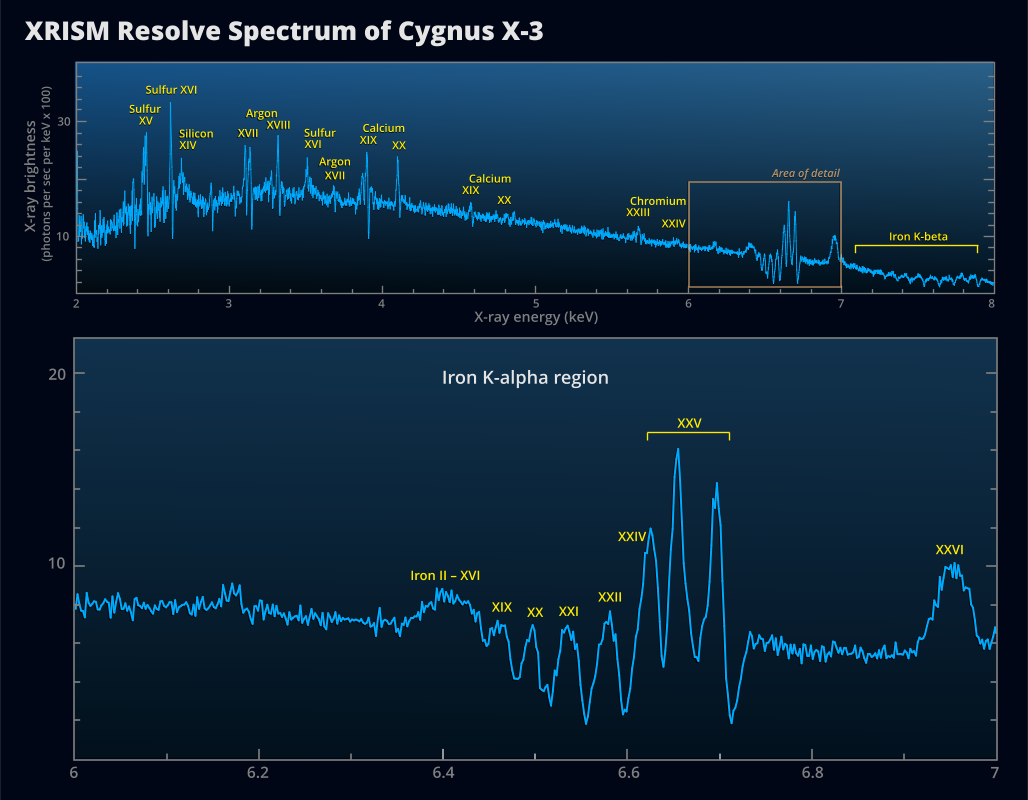X-Ray Imaging and Spectroscopy Mission (XRISM)
The X-Ray Imaging and Spectroscopy Mission (XRISM), which was formerly known as XARM, is a JAXA/NASA collaborative mission, with ESA participation. The objective of the mission is to investigate celestial X-ray objects in the Universe with high-throughput imaging and high-resolution spectroscopy. XRISM was launched from the Tanegashima Space Center at 8:42 a.m on September 7, 2023 JST in Japan (23:42 on September 6, 2023 UT). The XRISM payload consists of two instruments:
Their characteristics are similar to the SXS and SXI, respectively, flown on Hitomi. XRISM is designed to resume and recover most of the the science capability lost with the Hitomi mishap, focusing only on the soft X-ray bands. (Hitomi's high energy instruments, HXI and SGD, have no counterparts in XRISM.) NASA/GSFC develops the Resolve detector system and many of its subsystems together with the X-ray Mirror Assemblies. NASA/GSFC is also responsible for the Science Data Center, which is developing the analysis software for all instruments, the data processing pipeline, as well as support of Guest Observers and the XRISM Guest Observer (GO) Program. This site is intended primarily for researchers who are interested in XRISM data. Members of the general public, students, and teachers are invited to visit the Students/Teachers/Public section and follow the links.
If you have questions regarding XRISM, concerning, e.g., calibration, analysis, proposing, ToOs, or coordination, please
use HEASARC's Feedback form
, or click
the "HELP" icon to the left. To subscribe to the mailing list for announcements relevant to the XRISM community of general observers, send an email with 'subscribe' in the subject to xrism-announcements-join@lists.nasa.gov.
XRISM Site for the Public at NASA Latest News
|




